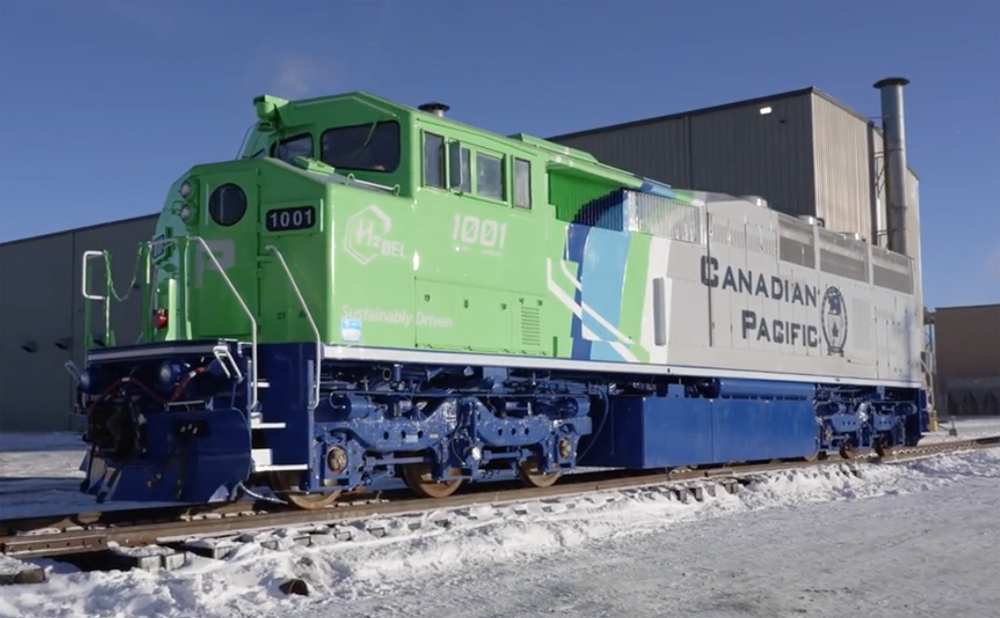
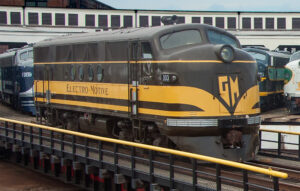
KANSAS CITY — You know the story: In November 1939 Electro-Motive FT No. 103 embarked on an 11-month, 83,764-mile demonstration tour on some of the toughest territory that American railroads could throw at the 5,400 horsepower, four-unit locomotive set. In test runs with freight and passenger trains, the experimental diesel-electric proved itself superior to even the most modern steam locomotives. And within 20 years steam was vanquished, making the 103 what Trains Editor David P. Morgan called “the diesel that did it.”
Now, 84 years later, could Canadian Pacific Kansas City’s trio of prototype hydrogen fuel cell locomotives do to the diesel-electric what the 103 did to steam?
CPKC officials believe it’s possible. And they say it’s necessary in order to achieve the railway’s emission-reduction goals.
“We know as an industry, we know at CPKC: The railroads must lead the transportation sector into a low carbon economy,” Justin Meyer, the railway’s senior vice president of engineering and mechanical, said during the CPKC investor day on Wednesday at Kansas City Union Station.
CPKC’s hydrogen-powered locomotives use fuel cells to produce electricity that’s stored in batteries and sent to each unit’s conventional traction motors. The locomotives were the brainchild of Kyle Mulligan, CPKC’s chief engineer of railway technology. He pitched the idea to CP CEO Keith Creel in 2020, and Creel gave the go-ahead to convert a single SD40-2F into the railway’s first hydrogen fuel cell freight locomotive.
“I can’t think of anything that would be more important than being able to create a locomotive that only outputs water as the exhaust,” Mulligan said in a video played at investor day. It took Mulligan and his nine-person team just 11 months to go from concept to a test run of H2 0EL No. 1001. H2 0EL stands for “hydrogen zero-emissions locomotive.”
“It was truly built from the ground up. All of the software is done in house, all of the electrical design and drawings are done in house. The fabrication is done locally. We’re creating an ecosystem of change,” says Mulligan, who is a certified locomotive engineer and conductor. “This project is the chance to change the industry entirely.”
The 1001 and its four-axle counterpart, GP38-2H No. 1002, will complete testing in revenue service in the third quarter and will be handed over to the operating department for daily local and yard service starting in the fourth quarter.
A high-horsepower, AC-traction locomotive, AC4400CW No. 9517, is currently being converted to hydrogen power at the shop of CPKC’s partner, Bilton Welding and Manufacturing Ltd. of Innisfail, Alberta, some 60 miles north of Calgary.
“Our climate goals will not be realized without understanding what we do with our high-horsepower fleet,” Meyer says. “It is that critical because over 90% of our Scope I emissions come from this fleet.”
Scope I emissions, which companies are trying to reduce dramatically in order to limit the impact of climate change, are their direct greenhouse gas emissions.
The AC-traction hydrogen locomotive will produce more than 6,000 hp and is expected to complete movement tests early next year. Then it will be used in coal service, hauling Teck Resources metallurgical coal from its mines in southern British Columbia to Vancouver for export. Teck and CP announced the pilot program last month.
“Those coal trains are 152 cars long and they currently run today with four AC locomotives,” Meyer says. “Our strategy is, once our locomotive is up and running and ready to be tested in service, we’ll pair it with a tender and give it the extra fuel it needs and we’ll begin operating that locomotive with those coal trains.”
Testing in coal service will put the high-horsepower locomotive up against the 2.2% grades, curves, and tough weather of CPKC’s main line through the Canadian Rockies west of Golden, B.C., Meyer says.
Also crucial to the hydrogen fuel cell program: The partnership with CSX Transportation that the railroads announced last week. CPKC will supply conversion kits that CSX will install on low-horsepower units at its former Chesapeake & Ohio locomotive shop complex in Huntington, W.Va.
“Partnering with a Class I railroad is a pivotal point in this project,” Meyer says. “It’s going to allow us to do a few things. One is with a partner like CSX, we will gain their understanding and help on the conversion side with the facilities they have in West Virginia. We bring our technology to them, and working together we will accelerate the number of assets that go into service.”
Getting as many fuel cell locomotives into service as quickly as possible is important, Meyer says. That will allow CPKC and CSX to work the locomotives through all four seasons and in various operational settings. The railroads will gain a better understanding of the locomotives’ performance and what might be necessary to improve their reliability over the long term, Meyer says.
By developing the retrofit kits, CPKC will have the ability to quickly refit its entire diesel electric fleet, Mulligan says. “It’s really exciting to see that there’s a transition path that’s right in front of our eyes,” he adds.
Hydrogen might not be the only solution for reducing or eliminating greenhouse gas emissions from CPKC’s locomotive fleet, Meyer says. But it has several advantages over battery-electric locomotives, because hydrogen fueling is similar to fueling a diesel, he explains.
Both diesels and hydrogen locomotives can have their fuel tanks filled at fuel pads or by tanker trucks, and the hydrogen refueling process takes roughly the same amount of time as topping off a diesel fuel tank. Battery-electric charging takes up to 14 hours and can only be done at fixed locations.
CPKC wouldn’t be able to recharge a battery-electric that ran out of juice while away from a charging station, a fact that would limit their operational flexibility because they’d have to be towed back to a charger. “What options do we have? On the type of railroad we run, an extension cord wouldn’t be able to be run across an operating yard,” Meyer says.
CPKC, like other railroads, has built its fueling, mainline, and yard operations around the diesel-electric, Meyer says. Switching to hydrogen would be an easier transition due to its similar fueling characteristics, he says.
CPKC is using solar power to produce hydrogen at its Calgary headquarters. It also has a separate hydrogen production facility in Edmonton, and has partnered with the Alberta provincial government to fund the second and third prototype locomotives.
— Updated at 3:45 p.m. CDT to correct first name of Justin Meyer, senior vice president of engineering and mechanical.
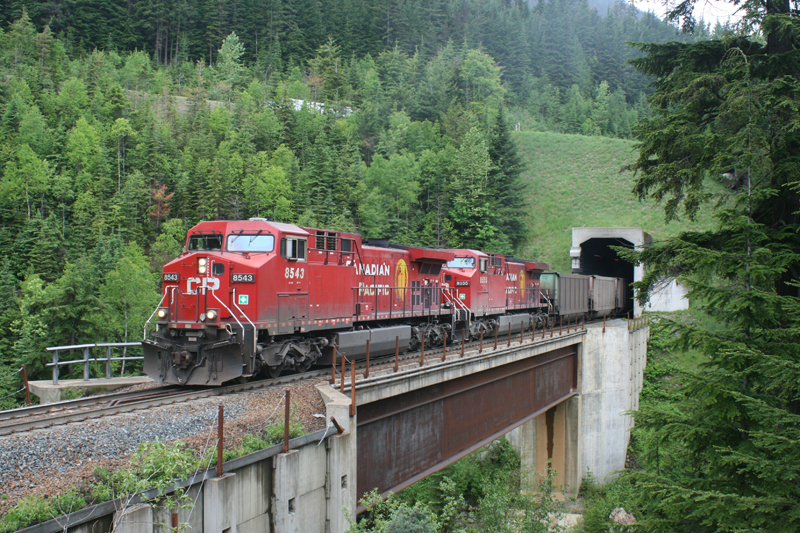







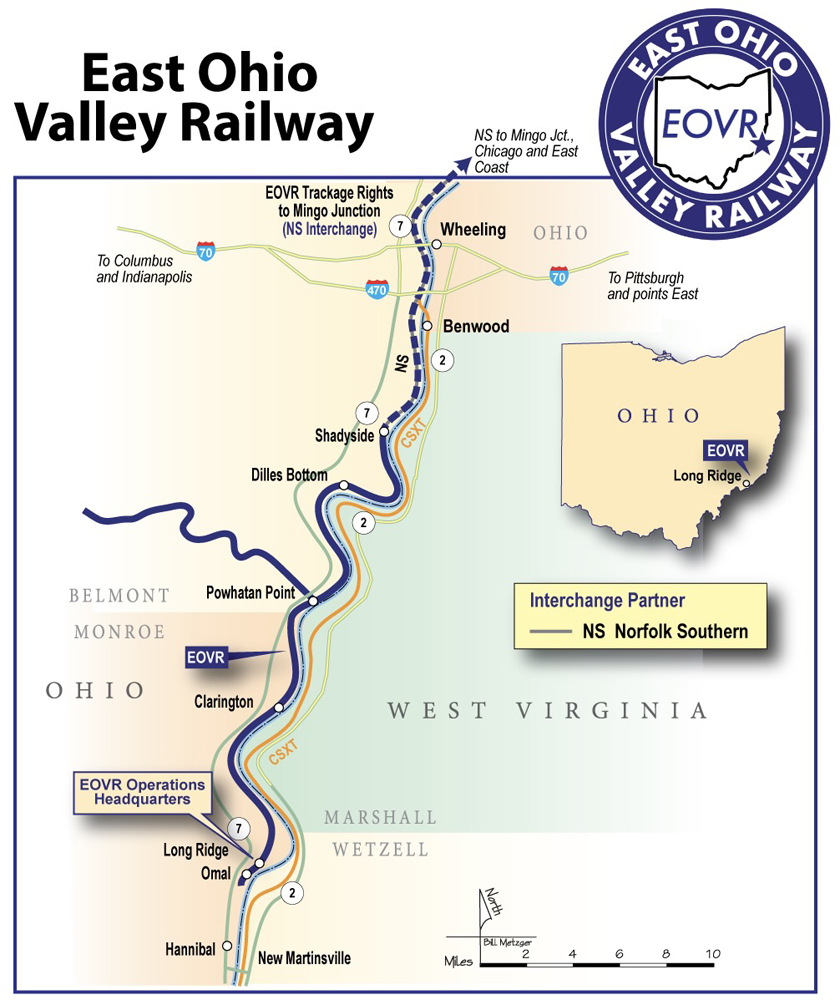

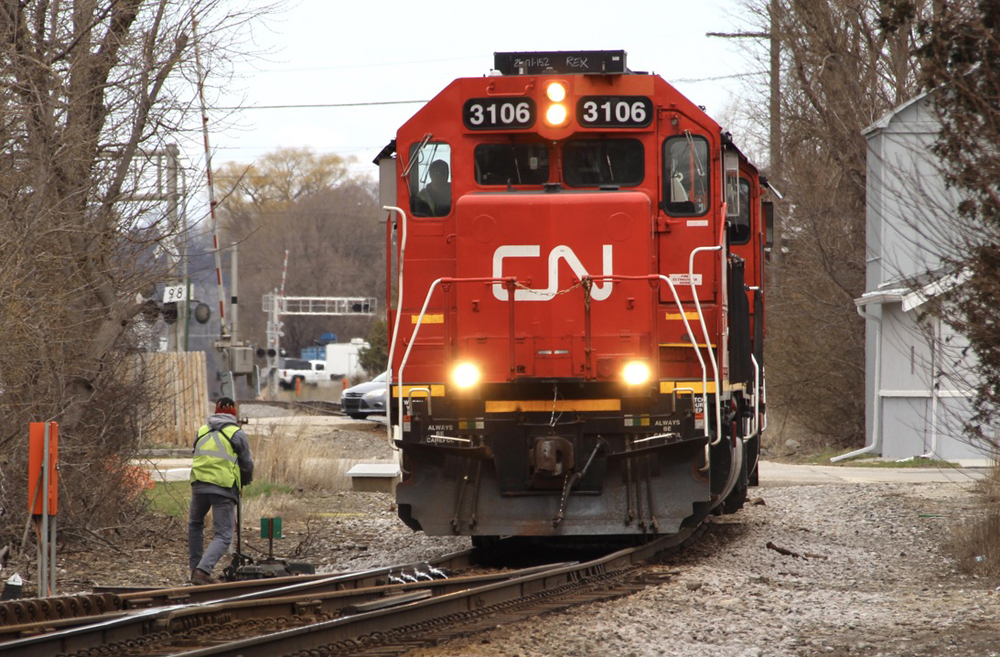




What I see as potential for safe and efficient massive energy is molten salt, liquid fluoride, thorium reactors, (LFTR) that could be used on strategically located railroad power plants for catenary electric power, or even on a small scale application, as a scaled down power plant on an electrical traction motor locomotive. And LFTR energy could even supply high heat to fire boilers on steam locomotives in place of coal or fuel oil.
https://en.wikipedia.org/wiki/Liquid_fluoride_thorium_reactor
The story is about building practical locomotives powered with hydrogen fuel cells. Two units with power levels typical of current diesels are built and under test. A 6,000 horsepower heavy haul unit is in the works. Operating the hydrogen fueled units in revenue service is the next challenge. Can they be used interchangeably with diesels? Can hydrogen fuel be used as easily as diesel? They seem to have an advantage on routes with tunnels because they don’t generate noxious exhaust. No need to hold trains while the fans clear exhaust from the tunnel.
Nuclear, hydro, wind, solar and geothermal are all sources of minimal carbon dioxide electricity to produce clean hydrogen. Steam reforming of methane is also a potential source if carbon capture technology is used. Technology exists to make hydrogen so it is not some big unknown. Innovation will improve the hydrogen production technology and reduce cost.
I am satisfied that the evidence exists to show the earth’s deteriorating climate is a direct consequence of dumping billions of tons of carbon dioxide into the atmosphere. Hydrogen fuel cell locomotives are one way of reducing the contribution from railroads.
Hydrogen from solar? Might meet a small specialty use. Never be enough solar to supply a whole RR. As well H2 really can find any way to escape. However, it costs more to make a BTU of hydrogen than other useful sources such as petroleum and natural gas.
History can easily repeat itself in the railroad community (North America or elsewhere), too!
Dr. Güntürk Üstün
The question I have is where is the water going to come from. The purer water is, the easier it is to work with. In many places in North America water suitable for drinking and other purposes is in short supply.
I’m still for electrification, even if it was jut for line haul. Been done in Russia so mutes the distance argument.
It will never happen though.
I think the hydrogen trial is a noble venture however to some degree it is the Alberta government trying to show their arch enemy the federal gov of the day they are trying to help the cause with financial support to CKCP.
Would CKPC be doing it alone, hard to say.
What would have led to a much more credible venture would have been Caterpillars or Wabtecs involvement however they do make diesel engines, so not very likely.
Fred Frailey wrote a very similar piece about 10 years ago when it looked like LNG was about to take off.
I hope CP and the industry do find a solution, be it H2, battery, electrification or other.
The solution is don’t fix it ’cause it ain’t broke, drill, baby, drill, and the Earth will be just fine. Send your death threats to my email.
GEORGE PINS is right. The most efficient source of power is petroleum.
Wrong, Mr. Landey. The most efficient source of power is the sun. Once the solar panel is installed, it takes no outside energy to produce electricity from the sun, or to use that electricity to create hydrogen. It takes a LOT of energy to pump, collect, and refine petroleum, with some amount of waste byproduct at the end.
It takes a LOT of energy to produce that solar panel. Where will that come from? More solar panels? And rare materials. From where, did you say? How many do we need to run the railroad? How much land to array them? Making your argument “once the solar panel is installed” conveniently ignores all that.
Well coughing on Canadian wildfire smoke in Upstate NY, I’m glad that some in Canada are taking solutions to Global Warming seriously, hydrogen fuel cells I think can become as economical as diesel, a lot of innovation is being focus on new tech and science on its clean production.
Solar energy is a major use (or mis-use) of land and resources. The sun is free. Building and maintaining solar panels, and converting solar DC to AC for transmission, is very inefficient.
It (still) takes more energy to produce hydrogen than the yield from hydrogen. Thermodynamics was, is and shall always be king irrespective of virtue signaling.
This is greenwashing, to check a box on ESG audits. Without the $15M grant from the Alberta government, would CPKC be doing this? Is CSX getting federal grant money?
Production of hydrogen from solar is possible, but at utility scale it simply doesn’t work. Most hydrogen is produced by splitting methane (natural gas) into H2 & CO2 and accomplishing little in terms of climate. Hydrogen fuel cells require a lot if platinum; are there sufficient resources and what is that climate impact? Hydrogen as a fuel for combustion engines needs a huge infrastructure and it is dangerous. H2 leaks through metal tanks and fittings. Remember the hydrogen BMWs? The couldn’t be parked in a garage for this reason.
I would take CPKC & CSX more seriously if they were making the long term investment in electric traction by stringing catenary. The carbon footprint would be miniscule compared to diesel and there would be a large boost in capacity and efficiency. But electrification requires a long term investment horizon and the PSR executives and Wall Street simply don’t do long term.
Without the enormous subsidies that the oil industry gets, would they be where they are?
Yes.
This will be complicated if you ask me